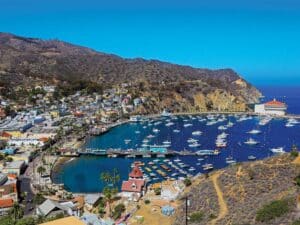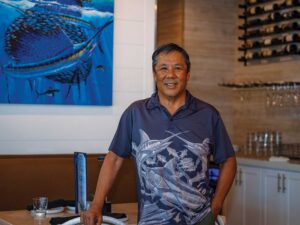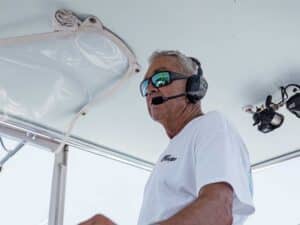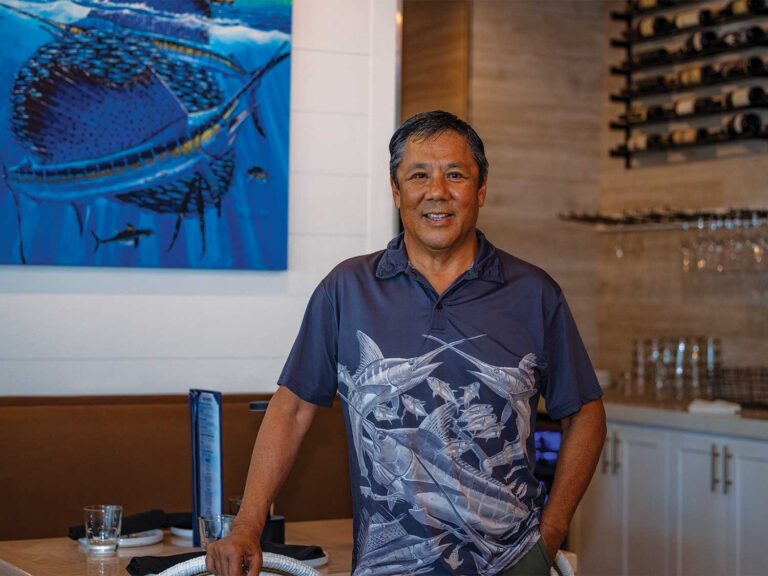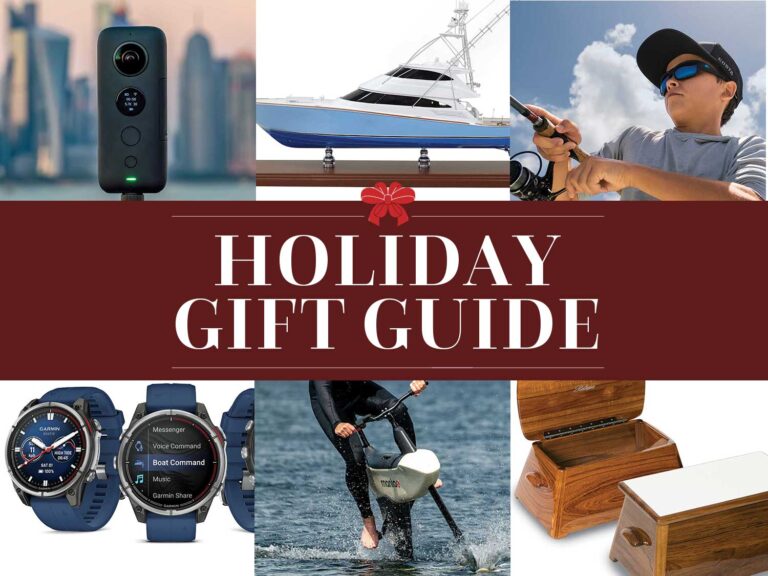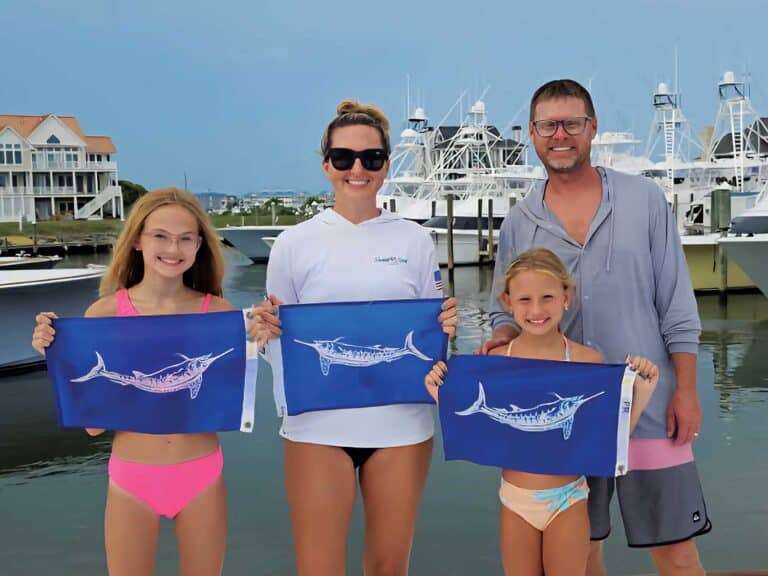
Before daylight, they gathered in Hatteras, North Carolina, on a chilly March morning in 1995, for the most epic day of giant bluefin tuna fishing ever recorded. In the lineup were three veterans of the Cat Cay, Bahamas, bluefin tuna fishery, plus one seasoned and one not-so-seasoned deckhand, and a wiry 64-year-old Texan who was perhaps the only angler in the world capable of pulling on dozens of giant bluefin ranging from 350 to 500 pounds. Capt. Peter B. Wright was the maestro who organized the trip. As for Capt. Gary Stuve, the wire man of the team that caught the previous record of 16 giants off Newfoundland, Canada, in 1969, he was out fishing in Florida when the phone call came in. “When I got home, my wife was already packing my bags,” he says. Stuve, joined by “Splittail” Charlie Hayden, arrived in Hatteras later that evening, where they met up with Wright and mates John Rafter and Charles Perry and their angler, Stewart Campbell. They went fishing the next day, never expecting Campbell to release 73 giant bluefin tuna the day before his 65th birthday.
In the span of 25 years, Campbell set 15 billfish world records, some of which he broke three times. He holds four Atlantic spearfish records in 6-, 8-, 12- and 16-pound-test line classes, as well as the 30-pound-test record for Atlantic bigeye tuna. How he became one of the greatest light-tackle anglers of all time is a story of persistence, perfectionism and survival. It’s also a blueprint for anyone wanting to become a better angler.
Campbell’s wife Nikki also set several IGFA world records, including this one in 1996.
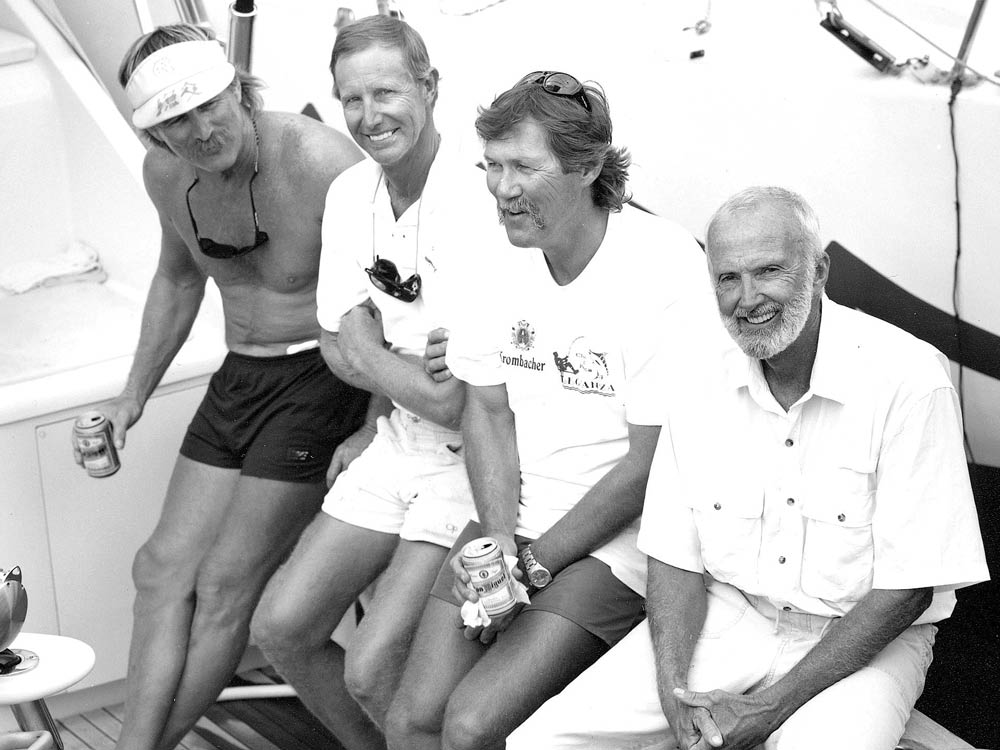
A Love for the Sport
Campbell was in his 50s when he and his wife, Nikki, bought a weekend place in Port O’Connor, Texas. He took up offshore fishing, but the marlin he was catching in the Gulf of Mexico were all on lures. His quest to become a better angler did not truly begin until 1983.
In the early 1970s, Campbell fished in St. Thomas for the first time. He and friend Walter Fondren next headed to the Great Barrier Reef off Australia in 1973 to fish for black marlin, where he had a serendipitous encounter with Wright and Perry. “That was the beginning of our give-and-take,” says Wright, who for the next three decades became an ex officio member of Campbell’s fishing team, along with Capt. Bark Garnsey.
By the mid-1970s, Campbell had become a regular fixture during the July moon in St. Thomas, fishing most often on Xiphias, a 42-foot Merritt owned by the O’Connor family, of South Texas.
“He used to come down and fish with us when the owners were not using the boat,” says Garnsey. “The first week he fished with me, we developed a friendship that lasted more than 30 years.”
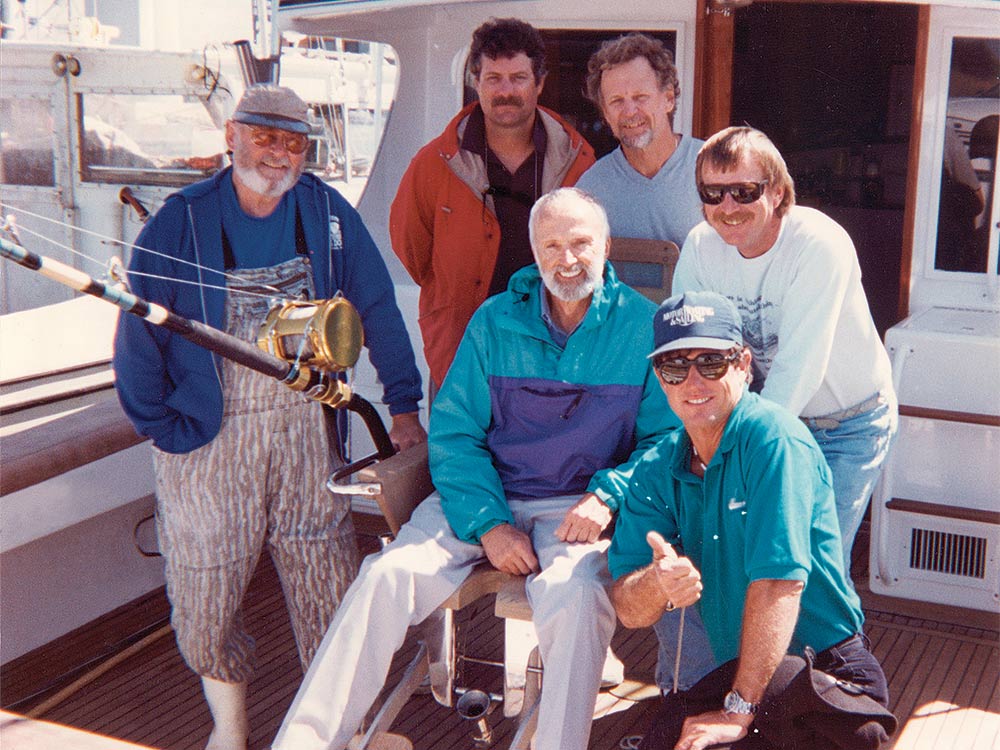
On one such trip, Campbell expressed a desire to travel the world and explore new fishing grounds after he retired. That led to a job offer for Garnsey. In 1983, Campbell bought a 37-foot Merritt and named it Chunda. It was Garnsey who broached the subject of where to start their adventure.
“Why don’t we head down to La Guaira, Venezuela?” he asked.
Campbell’s response was anything but enthusiastic. “I want to catch big fish,” he said. “All they have there are small blue marlin, sailfish and white marlin.”
“Not to take anything away from lure-fishing, but if you want to become a good angler, you’ve got to first learn to hook and catch fish on natural baits,” Garnsey replied. “Besides, some of the best anglers are there, and you can learn a lot from them.”
“He was 100 percent right,” Campbell said in a 2005 interview.
During the next few years, the engineer applied his considerable analytical skills to hooking and catching fish on light tackle, studying the short pumps and finesse used by anglers like Aquiles Garcia Sr., Ron Morrison and Rafael Arnal.
“I mimicked what they were doing, testing each approach to see what worked best for us. That’s really when I began to appreciate the subtleties of light-tackle angling,” said Campbell.
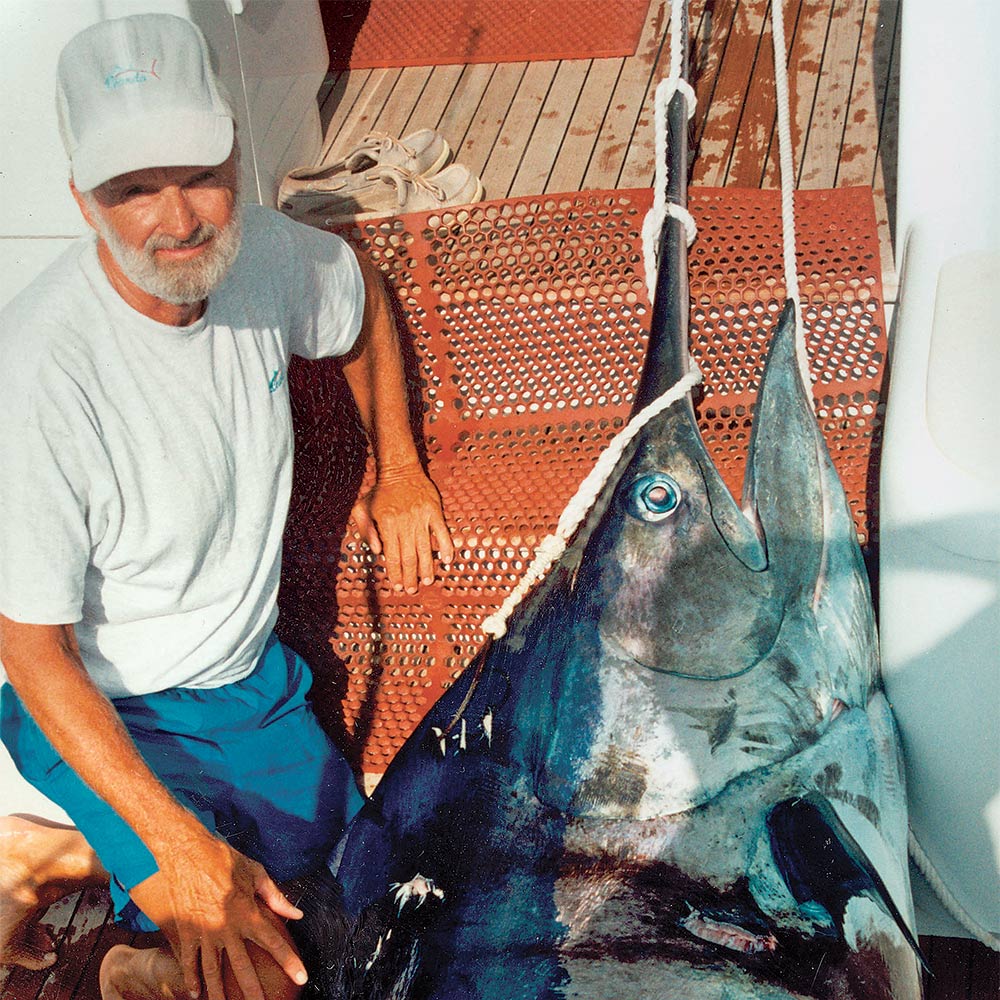
The World Records Begin to Fall
By 1985, the race for world records had begun when the IGFA created a host of new light-tackle-billfish-record categories, including 2-, 4-, 8-, 12- and 16-pound-test line classes. Americans Jerry Dunaway and Mike Levitt, Frenchman Mark Giraud and Belgian angler Leo Cloostermans were already making their way through the record book when Campbell set his sights on the 4-pound-test white marlin record.
He sought advice from Tommy Greene, of what was then known as Custom Rod and Gun in Lighthouse Point, Florida, for the best tackle for the job. Greene suggested a rod with a light tip and a freshwater baitcasting reel.
“I had no idea what a handicap it would be. Imagine fighting a white marlin with the line capacity for a bass,” Campbell said. The record Campbell set in 1985 didn’t last long, soon broken by Dunaway and Capt. Skip Smith, but it was enough to whet Campbell’s appetite for more. The pair was soon talking to experienced anglers such as Steve Zuckerman, who suggested the Ivory Coast of Africa for its calm seas and sizable blue marlin. In 1986, Campbell, Garnsey and Wright did an exploratory trip to the Abidjan Marlin Club aboard a bareboat charter. Wright had recently invented a new soft-headed lure in Kona, Hawaii, for the express purpose of helping him and partner Capt. Jeff Fay catch the 20-pound Pacific blue marlin record for none other than Zuckerman.
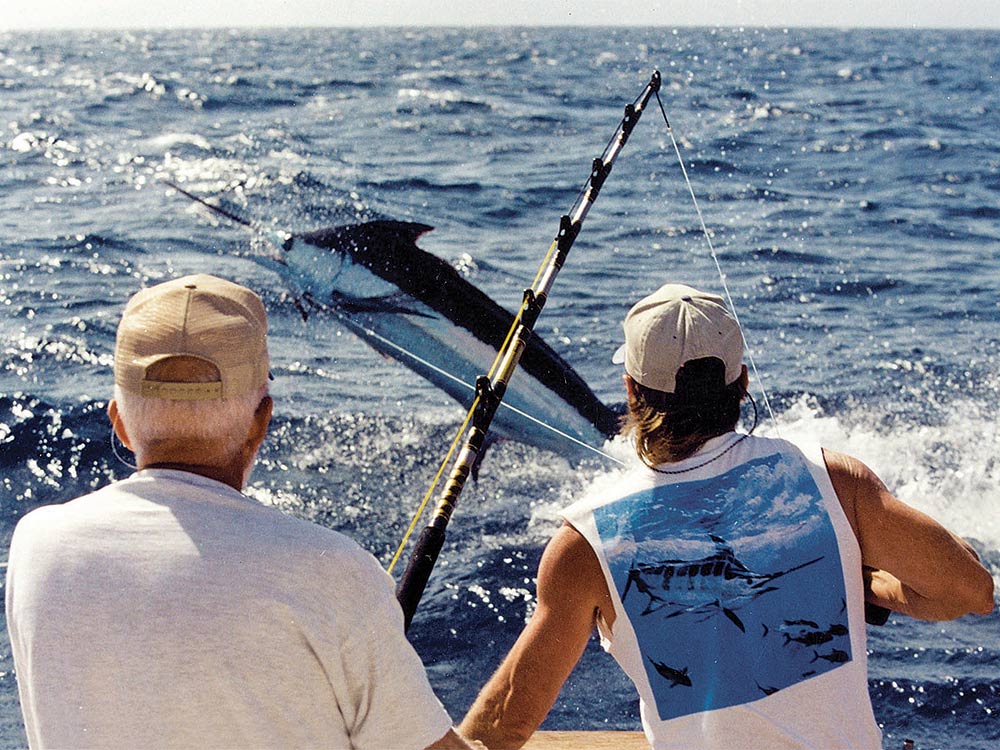
By 1986, Wright’s new lure was being manufactured as the Mold Craft Wide Range, a high-speed substitute for natural bait. Others, such as Smith, used it for the pitch-baiting technique to raise and select suitable fish for billfish records. All these captains were from the Fort Lauderdale/Pompano Beach area of Florida’s east coast and shared their techniques and ideas among one another. In fact, Wright carried an early batch of Wide Range lures with him to Africa. Campbell caught 17 blue marlin out of 21 bites on 30-pound-test tackle by free-spooling the lures like a ballyhoo.
“He was always questioning things, and always eager to learn. He kept a log on every fish but was always more curious about the ones he missed, trying to figure out where he erred.”
—Capt. Peter B. Wright
The Characteristics of a Good Angler
In his quest to become a good angler, Campbell had several things going for him, Wright observes. “He was always questioning things, and always eager to learn. He kept a log on every fish but was always more curious about the ones he missed, trying to figure out where he erred.” He also was physically prepared. Even though technique is much more important than brute strength, Campbell worked on his strength and stamina, Wright says. “More than any angler I have ever known, he knew the limits of his tackle — the physical dynamics of the rod, line and reel drag — and he would push them nearly to the breaking point when fighting a fish. Finally, he had the best crew, and the best captain. It’s a documented thing. They call it the skipper effect: A captain’s skill plays a significant role in the catch of fish, more important than any other factor. It is the most critical variable, whether it’s on a herring boat or a sport-fishing boat.”
Garnsey is a third-generation captain who grew up running the Helen S drift boats out of Pompano’s Hillsboro Inlet, and he agrees with Wright about the captain effect. “Peter believes you can trace the lineage of the great boat handlers back to giant tuna fishing off Cat Cay,” he says.
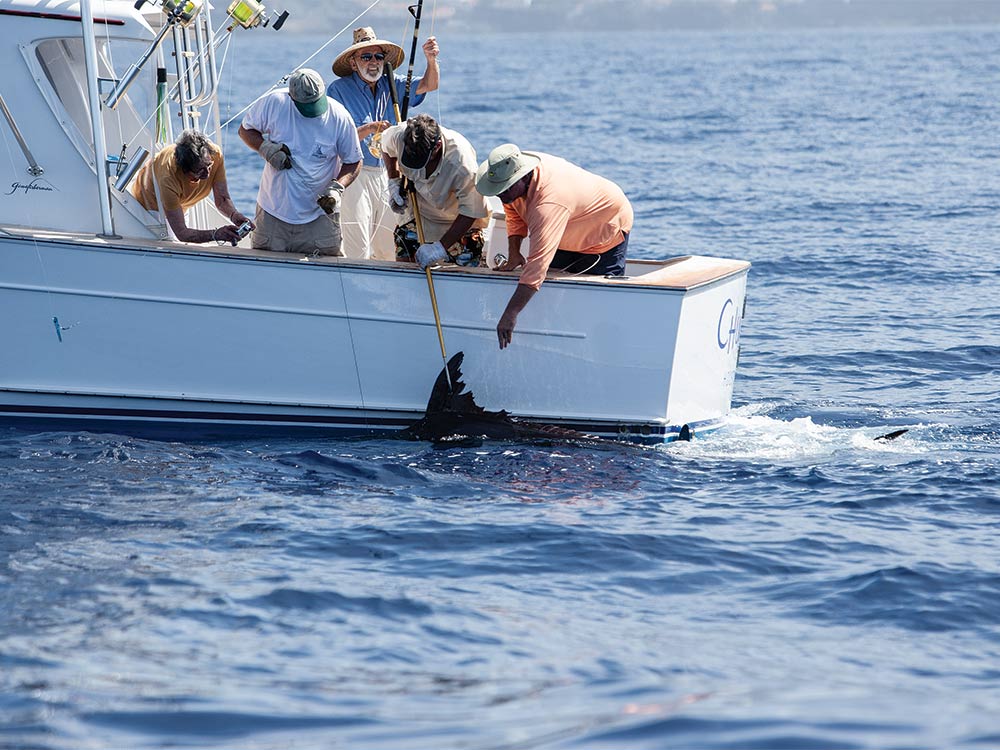
“I had the good fortune to get in on the tail end of the bluefin tuna action in the Bahamas while working for Capt. Billy Baum. He taught me the tactics and boat handling. Aggressive on the wheel, Baum believed, as Peter does, that if you haven’t run over a line while chasing a fish down, you’re not doing your job right. Not being afraid to make a mistake is an important lesson I learned, especially fishing for records. A lot of great captains, such as Jimmy Donovan, Allen Merritt and especially Capt. Fred “Punch” Stone and Bill Staros, shared their expertise, showing me how to do things better and correcting the mistakes I made.”
To achieve high catch percentages, you’ve got to have a crew that is team-oriented and experienced, Garnsey says. “We tried out a few talented young deckhands but settled on Charles Perry, who was with us for 13 years, and Spencer Stratton. We were a bunch of old guys, Vietnam vets. What we shared was a work ethic that Stewart appreciated. He used to say you can’t train lazy. He had that in common with us,” he says.
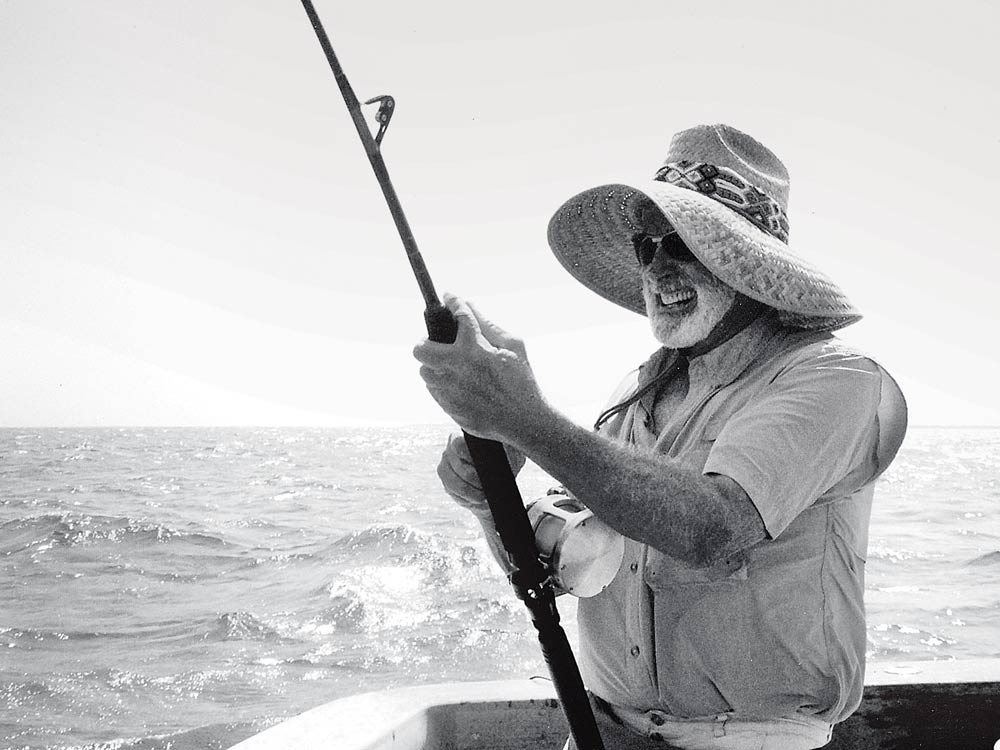
The soft-spoken Campbell would also listen intently to their advice. “The secret to being a good angler, captain or anything else is never thinking you are,” Garnsey says. That’s why George Staros shared insights about what made JoJo Del Guercio a great angler. “I wanted to know about JoJo’s process of fighting fish,” Campbell confessed. “George, who was JoJo’s mate, told me in the chair, he bent his knees. I am totally against that. As Peter says, how many deep knee bends can you do while squatting and carrying a 400-pound weight on your back? A stiff-legged angler uses leverage in the chair, rocking back and forth with no strain or pain.” Campbell used the fighting chair for 16-pound-test-and-greater records because it was more efficient than standing up. He constantly fine-tuned that vital piece of gear to fit him better. “He was always taking measurements and then would have Merritt’s boatyard make the changes,” Perry adds. The same went for the AFTCO bucket and shoulder harnesses he wore, he says.
Another thing that led to Campbell’s success was his experimentation with lines. “He would order 100 spools of high-visibility Stren line and test the breaking strength of each spool three times using a commercial line tester, making notes on each one about where the line broke and the date. If a line broke over or under its breaking strength, he sent it back,” Garnsey says.
“He also tied every knot because he wanted it to be on him if we pulled one,” Perry adds. “But Stewart being Stewart, I don’t ever remember one failing. Again, he tested and retested the breaking strength of every knot style on his machine.” And then he would put them to the real test, applying as much as 19 pounds of drag on a fish, using 30-pound-test, before backing off.
“He would say, ‘We’re in the danger zone now, Charles,’” Perry says. “On 30-pound-test, it was unbelievable the way he played the drag to stop the fish from swimming. He knew just when to back off and when to dial up the pressure.”
Campbell caught his first world-record blue marlin off Puerto Rico on August 25, 1989. At 144 pounds, 8 ounces on 4-pound-test line, it beat Dunaway’s 4-pound-test mark set off Jamaica, but was soon beaten by Cloostermans’ astounding 100-to-1 fish in the Azores. “Jerry Dunaway and Capt. Skip Smith were competing with us for billfish records during that time,” Garnsey says. “As soon as we’d set a record, they would try to break it. The competition was a good thing.” Campbell still holds four of the 13 line-class world records for Atlantic blue marlin, including the 8- and 16-, 20- and 30-pound-class titles, which they focused on while fishing the Ivory Coast of Africa and in Madeira. It was there that Campbell learned a vital lesson of survival.
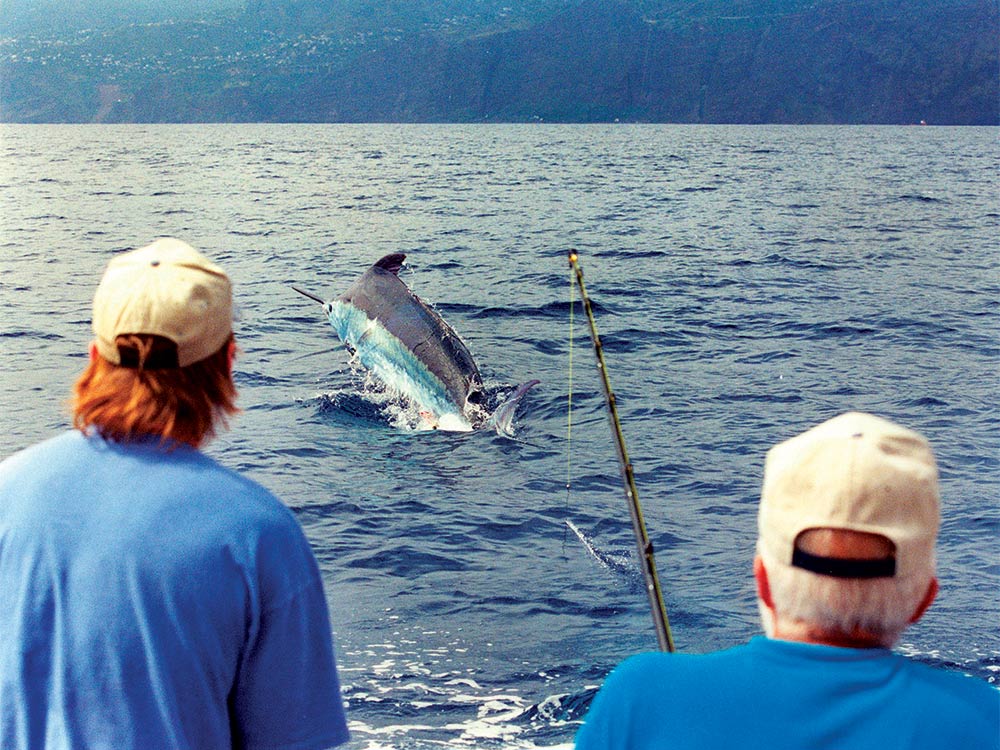
Near-Disaster in Madeira
Campbell was constantly striving to catch a 1,000-pound blue marlin on 30-pound-test line, Perry says. “And off Madeira on June 27, 1996, it almost proved his undoing. He finally hooked a fish we all estimated as a grander on 30-pound tackle,” Perry says. As usual, Garnsey was in position in the tower, communicating what the fish was doing through his headset. Everything went according to plan until the end. Wanting to take a peek at the fish, Campbell slipped out of the fighting chair just as Perry was wiring the fish. The swivel slid back from the rod tip, allowing enough slack so the leader spun around the tip three times. When the fish surged, it jerked the still-tethered Campbell off balance and overboard. All you can see in video captured of the incident are the soles of his boat shoes going over the transom.
Going in, Campbell recalled the sound of the guides stripping off the rod and the ping of the line breaking. Fortunately, the fish did not sound and it did not pull him deeper than about 50 feet. As he popped to the surface, blood streaming from a cut where the reel hit him in the face, he said, “Open the tuna door. I’ll swim in.” Once safely aboard, the first words out of his mouth were, “I know what I did wrong,” Perry says.
With an engineer’s mind, he had a hard time letting things go, Garnsey says. “He was always looking for the science. I’d tell him, ‘Stewart, don’t fish like an engineer, fish like a musician.’”
Four years later, he was gone. Stewart Campbell died from cancer on August 4, 2010, but through his story, hopefully others will be inspired to follow his path in becoming one of sport fishing’s truly great anglers.
